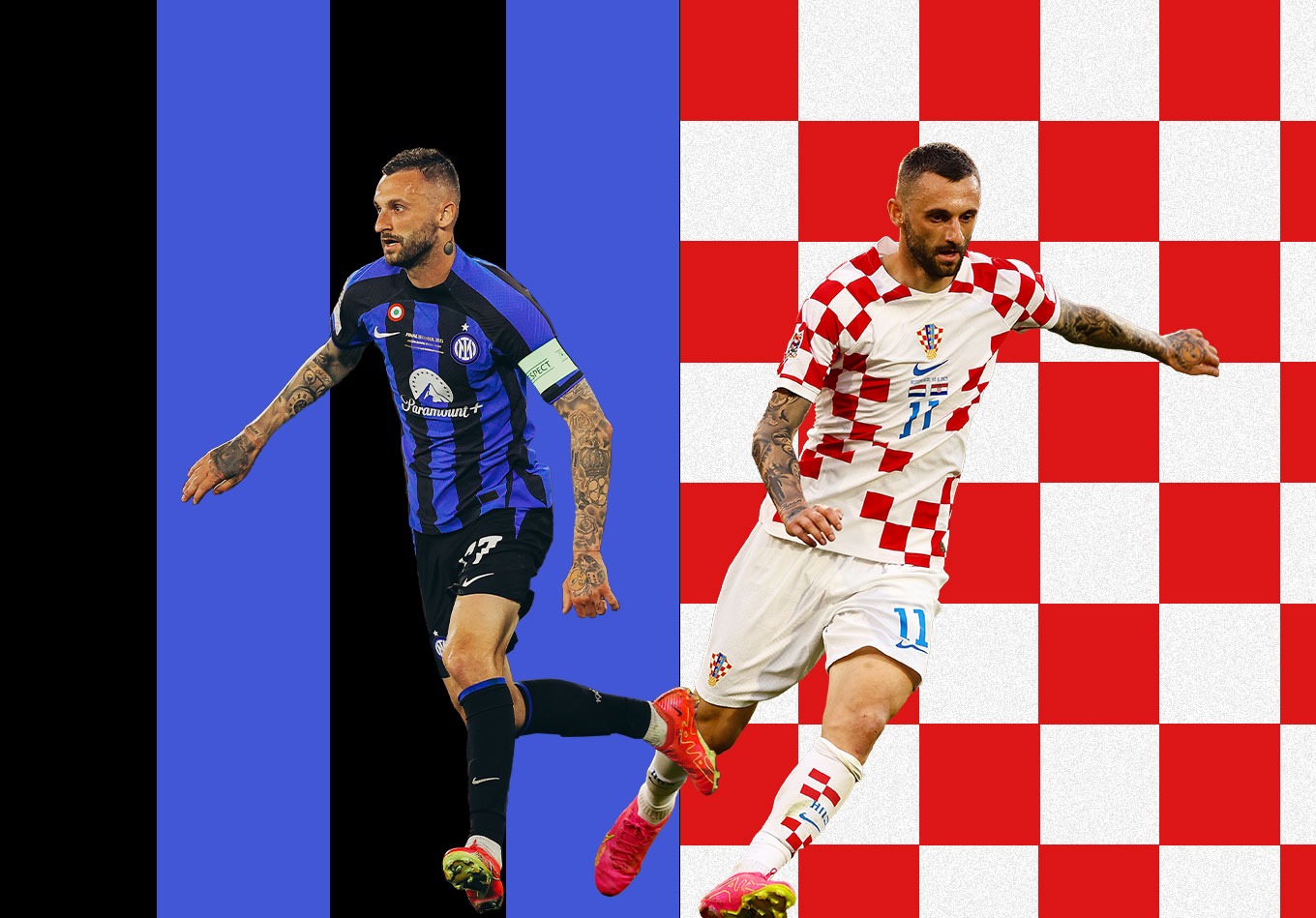This UEFA Nations League final could be Luka Modrić‘s last international game for Croatia. If you could pinpoint one achievement in retrospect, it’s hard to understate just what Modrić, along with Andrés Iniesta, represented for midfielders at Euro 2008.
Modrić and Iniesta were a palpable divergence from the powerhouse goalscoring threats of Michael Ballack, Steven Gerrard and Frank Lampard, redefining what’s tactically possible on a football pitch.
It’s even harder to crystallise what Modrić represented for Croatia in that qualification cycle along with Ivan Rakitić. Bear in mind at the 2006 World Cup, Zlatko Kranjčar started with a double pivot of Niko Kovač and Igor Tudor in what became a group-stage exit, while Modrić saw a grand total of 28 minutes in the three group games.
For a footballing culture that traditionally had a prerequisite of technical and cerebral midfielders, Modrić was like the rediscovery of fire – the player who eventually became footballing death by 1,000 cuts. In 2023, Croatia’s success on the international stage, built on their midfield prowess, stands as a contrast, arguably reflecting the rest of world football and its comparative pragmatism in that area of the pitch more than it does Croatia.
Yet also in 2023, no player represents what the Vatreni are on a footballing level more so than Marcelo Brozović. Since Luciano Spalletti shifted him to defensive midfielder at club level in 2017-18, Brozović simply does things other players in that position do not.
He provides both Croatia and Inter Milan a means to condition the opposition’s defensive approach – something that was particularly useful for Inter given Simone Inzaghi’s growing preference for Hakan Çalhanoğlu in that position, amid talk linking Brozović with a move to the Premier League.
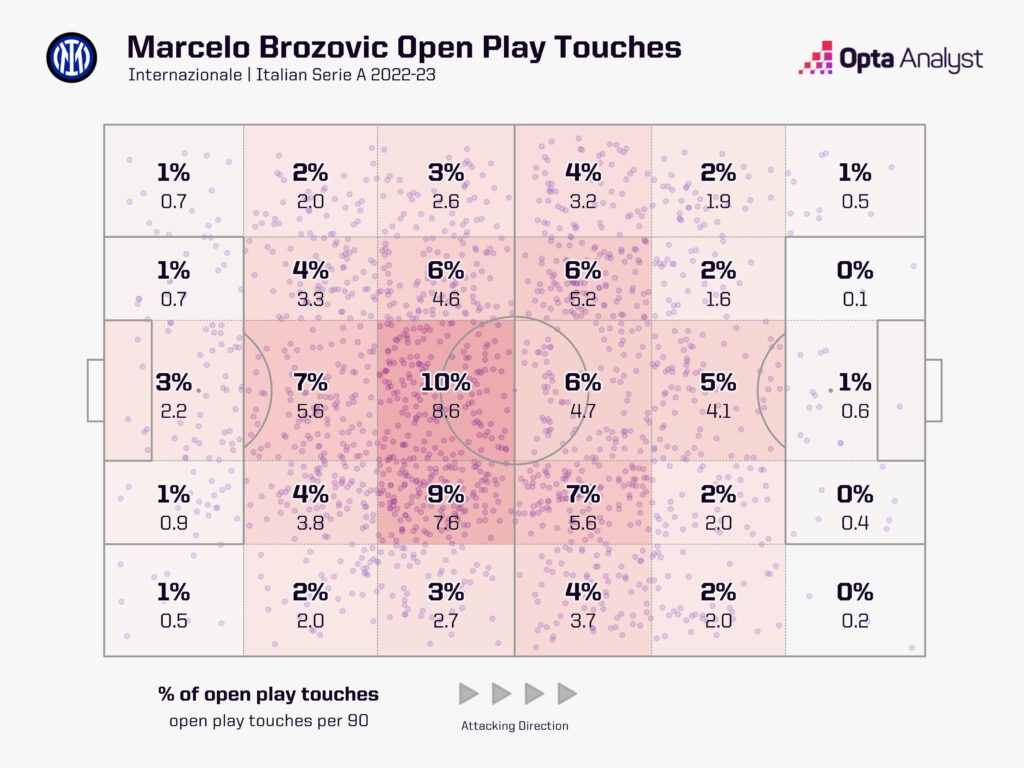
For Inter this past season, only Romelu Lukaku (0.32) picked up more assists in open play per 90 minutes played for Inter in Serie A games than Brozović (0.25).
In 2021-22, Brozović started the most open-play sequences that finished in team shots of any defensive midfielder in Europe’s top five leagues. Per 90 minutes, Brozovic (1.4) trailed only Casemiro (1.5) and Joshua Kimmich (1.4).
Despite playing 1,180 fewer minutes in 2022-23, after succumbing to injury during separate international spells for Croatia, Brozović remained in the top 10 for defensive midfielders in Europe’s top five leagues (minimum 1500 minutes). He also led defensive midfielders in Serie A in this category per 90 minutes at 1.07, pipping Milan’s Ismael Bennacer (1.03).
Brozović’s positional sense and consequent acceptance of risk makes him particularly more adaptable in early phases of possession.
As well as winning the ball and starting moves, the 30-year-old also always demands the ball to his feet, and in positions where other midfielders – let alone defensive midfielders – might be less forthcoming. Football becomes much easier for centre-backs when the midfielders in front of them are not hiding in shadows, and Brozović is constantly moving and scanning, searching for spaces that will allow his team to progress the ball.
There was one particular instance in Tuesday’s Nations League semi-final in Rotterdam, as the Netherlands looked to press as early as the fifth minute. Josip Juranović ignored the opportunity for a pass to Brozović between Teun Koopmeiners and Frenkie de Jong.
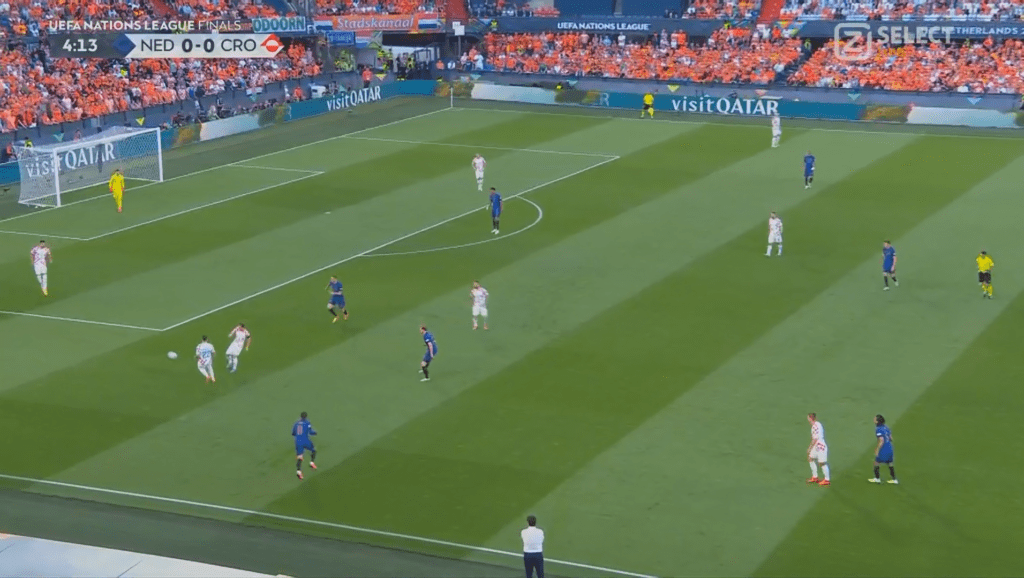
This allowed Koopmeiners to press Josip Šutalo. Brozović immediately darted out from behind Koopmeiners, and the ball went to Mateo Kovačić, who took an extra touch under pressure from Mats Wieffer.
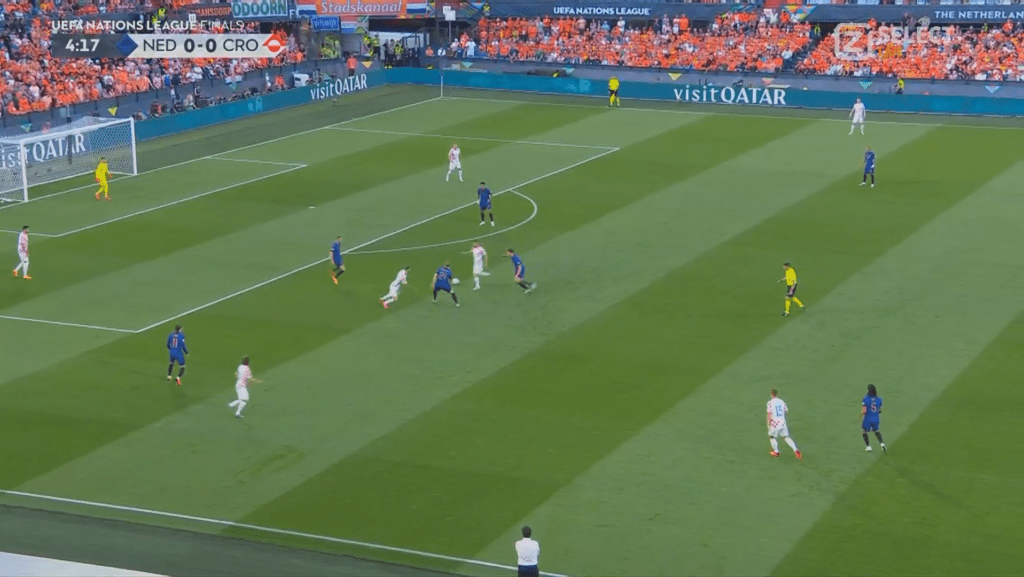
Brozović then stretches his arms out, pleading for the ball as it went back to Sutalo. Amid the chaos, though, Modrić shuffled out from behind Xavi Simons, and one pass cut through five Dutch players.
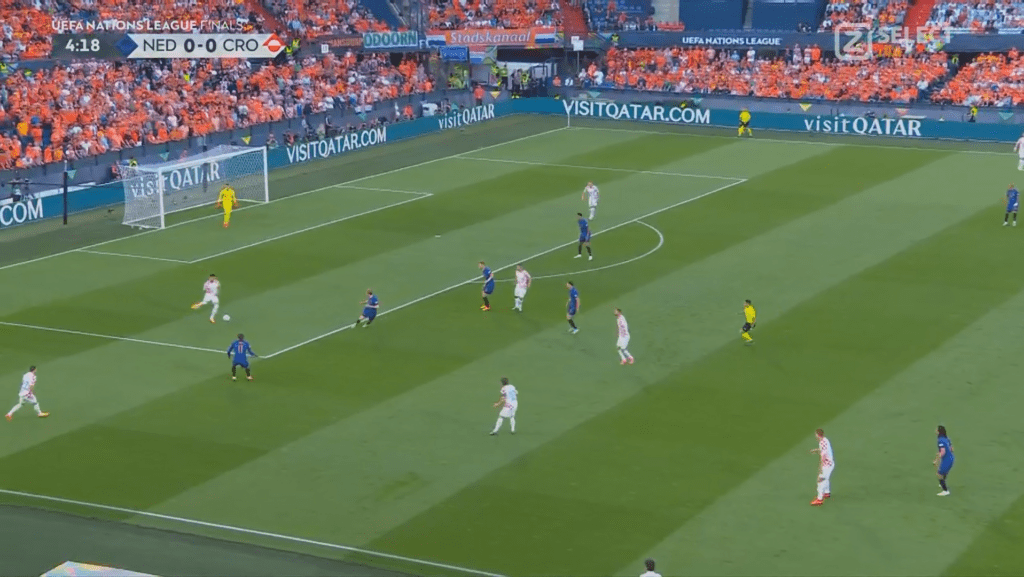
After a fourth movement for the ball in mere seconds, Modrić finally got the ball to Brozović – who is suddenly Croatia’s most advanced midfielder – and only an intervention from Lutsharel Geertruida denied Andrej Kramarić from being in on goal.
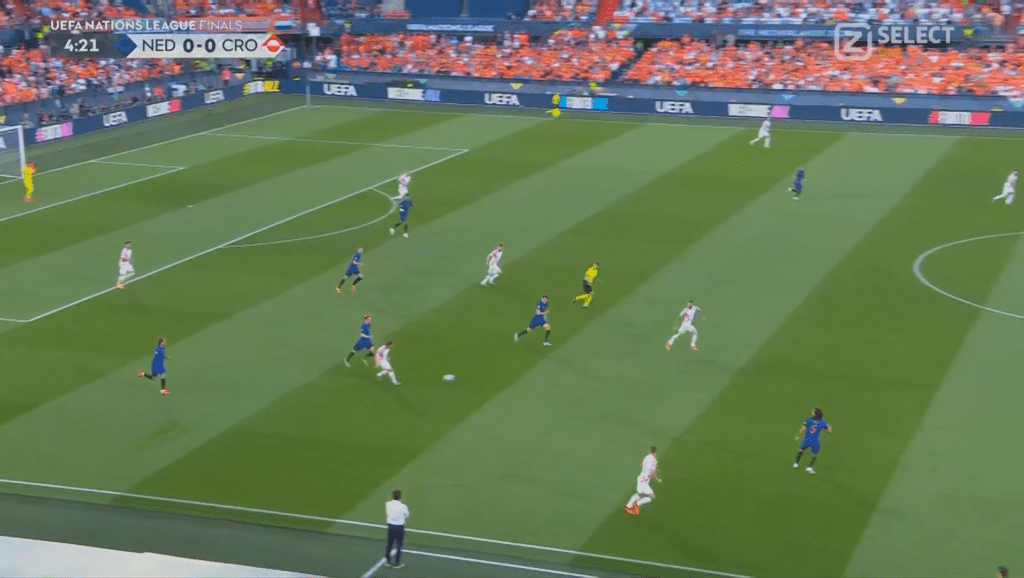
Another example of his brilliance on the ball is the way he neutralised Manchester City’s press in last weekend’s UEFA Champions League final. This came in stark contrast to how effective City’s pressing schemes were in home legs against Bayern Munich and Real Madrid in the preceding two stages of the competition, where they won the ball in the final third 15 and 13 times respectively. They won possession in the attacking third just four times in the final against Inter.
Then there’s the aspect of just how much ground Brozović had to cover defensively in Istanbul, only reaffirming just how much depends on him from a standpoint of collective functionality for the Nerazzurri. It was almost fitting that, for the goal, he had been dragged out of position to chase Phil Foden around because of defensive lapses from Francesco Acerbi and Çalhanoğlu, which eventually led to Rodri having enough time and space to score City’s eventual winner that night.
It’s not often someone from a losing team in a Champions League final has a case for being the best player on the pitch, but the level of impact Brozović has both with and without the ball, in all facets of the game, is just unique. And that’s probably the best way to both describe him, and the Croatian national team as a whole.
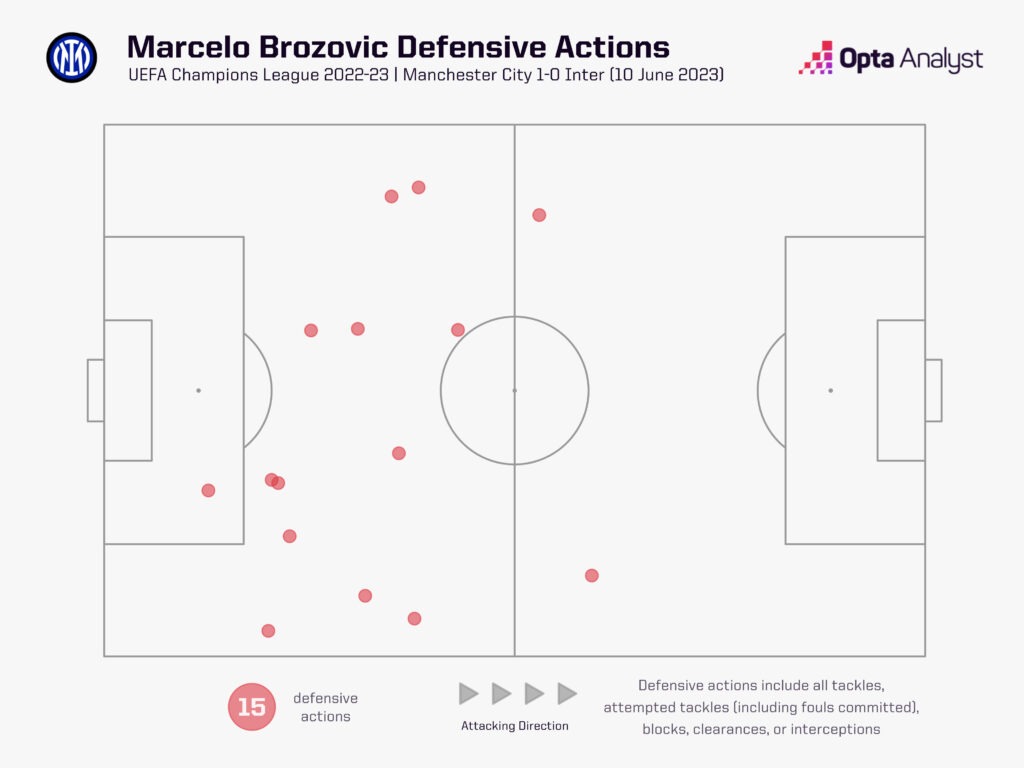
In the age of data in football, like Modrić and Ivan Rakitic before him, Brozović best reflects the arguable inefficiency of ball-centric data collation, warping the idea of what even constitutes effective midfielders and units today. Their impact is only just beginning to be quantified from a positional standpoint.
It’s also why Croatia are one of the more misunderstood national teams in recent memory, because they don’t fit the general perception of what football is or should be. This is before considering diverging ideas in football today between positionism and relationism, and what the Vatreni represent within that burgeoning discussion.
Zlatko Dalić’s efforts in maximising his midfielders’ strengths arguably hasn’t been what they were since Rakitić’s retirement from the international game.
Croatia are talented but flawed, with Mario Pašalić consistently resembling a square peg in a round hole as a winger, Andrej Kramarić toiling in the unnatural role as lone figure up front, while Lovro Majer and Nikola Vlašić play second fiddle to Kovačić in midfield, ultimately impacting numbers in the box and their quality of their possession.
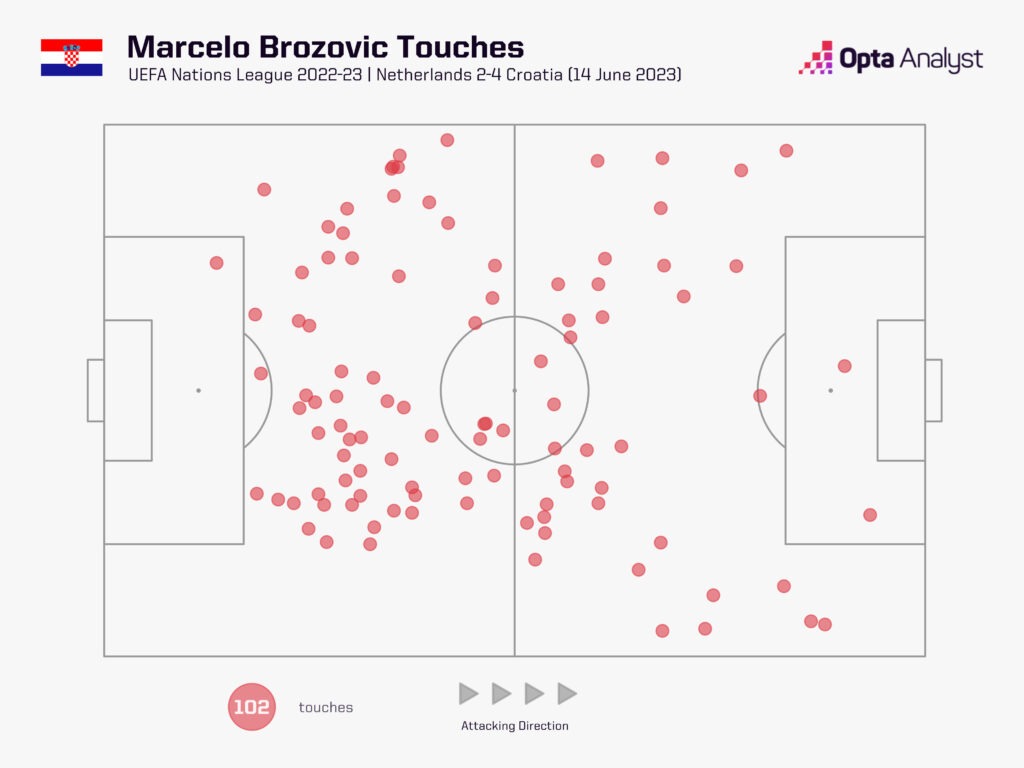
Yet, the unique individual quality Dalić has in midfield gives Croatia a higher base level in possession than other nations – for the simple fact that they can play and improvise through their midfield, as opposed to a midfield merely circulating the ball.
It’s what made narratives on an ageing generation amid their run to the semi-final in Qatar so illogical. It’s also what allowed the Vatreni to reset after Noa Lang’s late equaliser on Tuesday in Rotterdam, before going on to win in extra-time.
Croatia can manage games like few other teams. Because while retirement could be on the horizon for Modrić, who is naturally not the force he once was, in Brozović, they still have the most unique defensive midfielder on the planet.
Enjoy this? Subscribe to our newsletter to receive five stories each Friday. It’s free. Also, follow us on Twitter.
